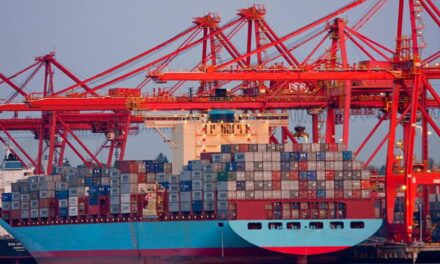Did you know that out of all the water available on earth, only 3% is freshwater? Of the 3%, ⅔ is located in icebergs, snows, and glaciers around the world. Of the 1% that’s left, a fifth is located in inaccessible areas, like rainfall monsoonal regions, which are completely inaccessible.
Water shortage is a major concern for all living organisms. Freshwater, though a renewable resource, can become scarce due to overuse or evaporation. It is possible to replenish freshwater through precipitation, but with the increase in population, the reserves may never be enough. That’s why wastewater management is necessary to supplement the available sources of freshwater.
In this article, we’ll dive into a guide to waste and freshwater management. We will also discuss the best practices and benefits of proper water management.
What are Wastewater and Freshwater?
Wastewater is water that is already used. It includes most of the used water from kitchen sinks, bathrooms, washing machines, toilets, or industries. Most of the water has foreign substances like oil, chemicals, human waste, or food particles. The water is unclean and we cannot use it as it is. The water contains harmful solids that require treatment before a release back to nature.
Freshwater occurs naturally. It contains less than 1000 milligrams per litre of dissolved salts or solids. Freshwater can be found in lakes, glaciers, icebergs, ponds, rivers, streams, or groundwater. It originates from precipitation and falls in the form of rain, snow, or mist. Freshwater always seems clean to the eyes, but you cannot consume it without treatment. This is because freshwater is likely to have pollutants from natural causes like floods or unnatural causes like human waste disposal.
Why There is a Need for Proper Water Management
Every living organism needs water to survive. Freshwater is essential for land mammals, water creatures, underground, and higher land plants. Even saline water organisms that survive in salty environments, need replenishing from freshwater sources.
Without a refill from the freshwater sources, saline waters could become too salty for any creature to survive. Replenishing of saline water from freshwater sources also resolves issues of excessive evaporation that destroys the living environment.
Think of it this way, every living creature is always moving to areas that guarantee a steady supply of freshwater. Even the great wildebeest migration in Africa happens because animals are looking for areas that receive enough rainfall and have sufficient food and water. We can say the same for human beings who prefer living close to reliable water sources.
Even people who live in desert areas prefer building their homes along the coastlines. What’s more is that homes, near a coastline or lake region, cost a lot – a sign of the importance of safe water for recreation, health, and home use.
But here is the problem, the amount of freshwater on the surface cannot satisfactorily fulfill our needs. Even if it did, there would be a need for water treatment so the water can be safe for consumption. The increase in population and an increase in human consumption has put a strain on all available water from natural water sources. That’s why there is a need for proper water management around the world.
Proper water management includes the treatment of wastewater and freshwater to ensure it is safe and sufficient for every living organism. It is necessary to clean all the water we consider waste in our homes and businesses to supplement water from precipitation. When we do this, we can be sure there will be enough water for agriculture, sanitation, and industrial applications.
Disadvantages of misusing water
What would happen to the people, animals, or plants that depend on water, if safe water was no longer available? A world without safe water is an inhabitable environment. When we do not properly treat freshwater and wastewater, it poses a health risk to the people and creatures depending on it.
Water that is not handled properly contains bacteria, viruses, and other pathogens that can cause disease outbreaks in human populations. There is also the occurrence of excess nitrogen, ammonia, or phosphorus in untreated water.
Excess chemicals are toxic to aquatic organisms and can hinder growth or lead to the death of creatures because they reduce oxygen levels. Industry waste and metals such as lead and mercury are also a great threat to the potency of living organisms on land and water.
Best Practices for Freshwater Management
Most of the freshwater exists on land surfaces. But even so, freshwater on the surface still depends on other factors in the water cycles. Agriculture, mining, and forestry play an essential role in determining the quality and quantity of freshwater.
Agriculture
There are several ways that agriculture affects freshwater management. First is through reduction of water level through processes like irrigation. Second is the introduction of pollutants like fertilizer to nearby water sources. Last is the introduction of the animal waste directly from animals that visit the source, or indirectly through transportation from the land.
To resolve such issues, the best practices for freshwater requires that we:
- Avoid fertilizing the land when water levels are high or during the rainy season.
- Measure the correct amount of fertilizer application per every catchment area.
- Properly vegetate and maintain agricultural lands.
- Avoid over-cultivation of land in areas prone to erosion.
- Avoid overgrazing to maintain proper vegetation levels.
- Keep animals away from water sources.
- Keep the right number of animals per land area to avoid straining the soil.
- Develop proper irrigation plans to avoid the overuse of water.
- Create a wastewater management program for agricultural wastewater.
- Construct bridges in areas that people frequently cross to minimize erosion.
- Check for areas with frequent water run-offs and construct ponds to reduce erosion.
Forestry
Both the native forests and plantation forests play an important role in the quality and quantity of water. To properly manage freshwater sources, the best practices in forestry dictates that we should:
- Avoid cutting trees along water sources to prevent washing down soil in waterways.
- Avoid turning forestry to pastoral land since it encourages the introduction of harmful chemicals to the soil.
- Maintain an excellent amount of riparian land along water sources to trap soil and prevent soil erosion.
- Encourage afforestation to control floods and regulate water sources.
- Have proper tree harvesting plans to avoid the effects of heavy machinery on land.
- Check for long-term solutions to soil disturbance like roads and construction that can increase sediment loss.
Mining
Over the past few years, there has been an increase in minerals people extract in water. Thanks to technology, miners can now go into deep waters and get valuable minerals. But the extraction has its fair share of impacts. The removal and dumping of rocks and soil and the cutting of vegetation has had a great impact on animals, plants, and freshwater in the areas.
To mitigate the effects of mining on freshwater, you can apply the following measures:
- Have a mining management plan that minimizes the number of sediments deposited in the water source.
- Create a mining rehabilitation plan to ensure ongoing maintenance of sites.
- Avoid mining in areas with high numbers of living organisms.
- Only undertake mining in areas where long-term containment of acid mine drainage is possible.
- Create a guide for evaluating progress before and after the mining process.
- Ensure closure of dangerous sites to avoid legacy issues.
Best Practices for Wastewater Management
Wastewater management involves the removal of harmful solids before we return the water back to the environment. Therefore, the best practices for wastewater management involve avoiding the entry of pollutants in clean water environments. The practices involve:
- Researching treatment requirements and planning on safe ways to execute them.
- Developing a clear operating procedure that safeguards the people and environment around the wastewater management plant.
- Avoiding spills, leaks, or runoffs from raw wastewater storage.
- Include primary treatment that aerates and removes 60 percent of solids in wastewater.
- Finally, use secondary treatment to remove over 90 percent of the suspended solids.
Conclusion
As the human population continues to grow, the demand for water surpasses what is naturally available. Water scarcity is a major concern, and it is expected to continue over the years. As the world gets ready for the new changes, wastewater and freshwater management becomes of great interest.
Using this guide regarding wastewater and freshwater management, people can enjoy better agricultural productivity. Water management will help with future irrigation expectations and ensure an abundance of food and water for all living organisms.
Water management will also ensure there is enough water for drinking, sanitation, and leisure. Through water management, the world will experience better economic benefits since we will have a healthy population ready to invest back into communities.
Proper water management has great impacts on technological advancements in areas of mining, fisheries, wildlife, and energy. Innovations in energy have led to an improvement in multi-usage pumps for steam power generation applications. The general applications are used to build heat, generate power, and sanitation processes.
Key Points
- Planning plays an important role in wastewater and freshwater management.
- Clean water is critical for the survival of all living organisms.
- Water improves the recreational value and quality of life.
- The water around us determines our health. Clean water ensures we do not suffer from preventable diseases.
- Wastewater and freshwater management ensures a continuous flow of safe water for every living organism.






